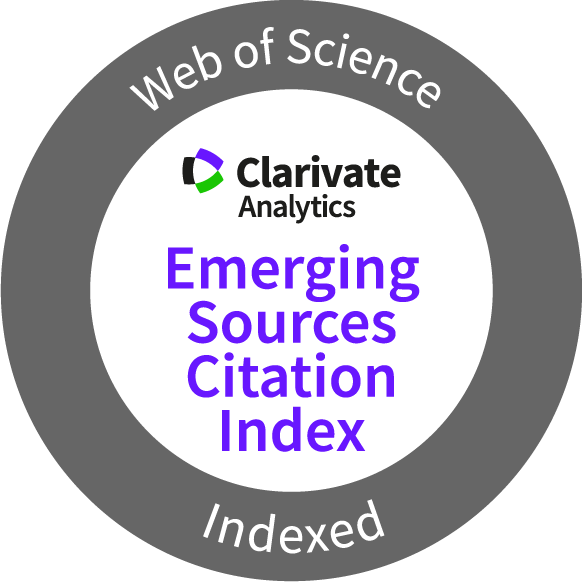Clinical Approach to Differentiating Epileptic Seizures from Bipolar Disorder
Abstract
Distinguishing between epileptic seizures and bipolar disorder in clinical setting presents a significant challenge due to overlapping symptoms and the complex mechanism underlying both conditions. This study offers a novel perspective by integrating the latest research and clinical practices to explore this intricate diagnostic landscape. Unlike previous studies that primarily focused on isolated aspects, this study synthesizes recent advancements in neuroimaging, wearable technology, and machine learning to enhance diagnostic accuracy. Data sources searched were Google Scholar, PubMed, and ScienceDirect using the keywords of ‘epileptic seizures’, ‘bipolar disorder’, ‘diagnosis’, ‘neuroimaging’, ‘wearable technology’, and ‘machine learning’. Following the Preferred Reporting Item for Systematic Review and Meta-Analysis (PRISMA) methodology, the findings highlight how the variability of mood episodes and their resemblance to seizure activity often complicate differential diagnosis. Moreover, they underscore the potentials of emerging technologies, such as real-time monitoring via wearable devices and AI-driven diagnostic tools, in refining current clinical approaches. This study emphasizes the necessity of clinic awareness regarding subtle but crucial distinctions between bipolar disorder and epileptic seizures. By leveraging continuous monitoring and data-driven insights, an innovative framework that combines clinical expertise with advanced technology is proposed, paving the way for more precise and effective diagnostic methods.
Keywords
Bipolar disorder, differential diagnosis, diagnosis, epileptic seizures
Full Text:
PDFReferences
- Elger CE, Hoppe C. Diagnostic challenges in epilepsy: seizure under-reporting and seizure detection. Lancet Neurol. 2018;17(3):279–88. doi:10.1016/S1474-4422(18)30038-3
- Yu S, Atrache R El, Tang J, Jackson M, Makarucha A, Cantley S, et al. Artificial intelligence-enhanced epileptic seizure detection by wearables. Epilepsia. 2023;64(12):3212–26. doi:10.1111/epi.17774
- McIntyre RS, Berk M, Brietzke E, Goldstein BI, López-Jaramillo C, Kessing LV, et al. Bipolar disorders. Lancet. 2020;Dec 5;396(10265):1841–56. doi:10.1016/S0140-6736(20)31544-0
- Scheffer IE, Berkovic S, Capovilla G, Connolly MB, French J, Guilhoto L, et al. ILAE classification of the epilepsies: Position paper of the ILAE Commission for Classification and Terminology. Epilepsia. 2017;58(4):512–21. doi:10.1111/epi.13709
- Pambudi P, Sidabutar O. Headache Patients hubungan antara derajat stres psikologis dengan intensitas nyeri pada pasien nyeri kepala tipe tegang. 2024;33(1):6–10.
- Lapalme-Remis S, Nguyen DK. Neuroimaging of Epilepsy. Continuum (Minneap Minn). 2022;28(2):306–38. doi:10.1212/CON.0000000000001080
- Leibetseder A, Eisermann M, LaFrance Jr WC, Nobili L, Oertzen TJ von. How to distinguish seizures from non-epileptic manifestations. Epileptic Disord Int epilepsy J with videotape. 2020;22(6):716–38. doi:10.1684/epd.2020.1234
- Akbar F, Saleh R, Kirmani S, Chand P, Mukhtiar K, Jan F, et al. Utility of genetic testing in pediatric epilepsy: Experience from a low to middle-income country. Epilepsy Behav Reports. 2022;20(100575). doi:10.1016/j.ebr.2022.100575
- Yang Q, Xing Q, Yang Q, Gong Y. Classification for psychiatric disorders including schizophrenia, bipolar disorder, and major depressive disorder using machine learning. Comput Struct Biotechnol J. 2022;20:5054–5064. doi:10.1016/j.csbj.2022.09.014
- Gao Y, Guo X, Wang S, Huang Z, Zhang B, Hong J, et al. Frontoparietal network homogeneity as a biomarker for mania and remitted bipolar disorder and a predictor of early treatment response in bipolar mania patient. J Affect Disord. 2023;339:486–94. doi:10.1016/j.jad.2023.07.033
- Ali A. Global health: epilepsy. Semin Neurol. 2018;38(2):191–9. doi:10.1055/s-0038-1646947
- Nurfianto S, Suhanda R, Yuarta FA, Refani P, Nina T, Sembiring A, et al. Review determinan sectio caesarea nonmedis di Indonesia : sebuah kajian sistematis. 2024;33(1):54–61.
- Thangarajoo RG, Reaz MBI, Srivastava G, Haque F, Ali SHM, Bakar ASA, et al. Machine learning-based epileptic seizure detection methods using wavelet and emd-based decomposition techniques: a review. Sensors (Basel). 2021;21(24):8485. doi:10.3390/s21248485
- Jaishankar B, M AA, D V, Raja L. A novel epilepsy seizure prediction model using deep learning and classification. A novel epilepsy seizure prediction model using deep learning and classification. Healthc Anal. 2023;4:100222. doi:10.1016/j.health.2023.100222.
- Thomaidis G V, Papadimitriou K, Michos S, Chartampilas E, Tsamardinos I. A characteristic cerebellar biosignature for bipolar disorder, identified with fully automatic machine learning. IBRO Neurosci Reports. 2023;15:77–89. doi:10.1016/j.ibneur.2023.06.008
- Almustafa KM. Classification of epileptic seizure dataset using different machine learning algorithms. Informatics Med Unlocked. 2020;21:100444. doi:10.1016/j.imu.2020.100444
- Shaheen S. Theoretical perspectives and current challenges of outcome-based education framework. Int J Eng Educ. 2019;1(2):122–9. doi: 10.14710/ijee.1.2.122-129
- Bostock ECS, Kirkby KC, Garry MI, Taylor BVM. Comparison of precipitating factors for mania and partial seizures: Indicative of shared pathophysiology?. J Affect Disord. 2015;183:57–67. doi:10.1016/j.jad.2015.04.057
DOI: https://doi.org/10.15395/mkb.v57.4022
Article Metrics
Abstract view : 283 timesPDF - 130 times

This work is licensed under a Creative Commons Attribution-NonCommercial 4.0 International License.

MKB is licensed under a Creative Commons Attribution-NonCommercial 4.0 International License
View My Stats






